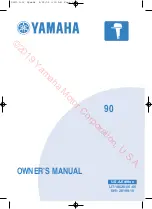
User Manual
3-4
V1.0
TriBoard TC3X3 TH V1.0 and TriBoard TC3X3 V1.0
2020-05
TriBoard Manual TC3X3
Hardware: TriBoard TC3X3 TH V1.0 and TriBoard TC3X3 V1.0
TriBoard Information
3.6.2
miniWiggler JDS
The miniWiggler JDS is a low cost debug tool which allows you access to the JTAG of the device. Make sure that
you have the latest DAS release. Debugging is possible via the DAS Server ‘UDAS‘. Please contact your prefered
debug vendor for support of DAS.
If you have connected the board to the PC and there runs the DAS server, then a working connection is visible via
the green ACTIV LED.
The status RUN LED is switched on/off through the DAS Server, depending on the used debugger (client).
IMPORTANT: Make sure that there is no or a tristated connection on X401 (OCDS1) and X402 (DAP) if the
ACTIV LED is on.
Per default the miniWiggler is connected to the DAP. If resistors R214, R215 and R216 assembled (default) then
the standard DAP is connected to miniWiggler. If all this resistors are not assembled then the miniWiggler can’t
be used. In this case only the DAP connectors X402 and X406 can be used. See
3.7
FlexRay™ (E-RAY)
The board has 2 IDC10 plugs for FlexRay™ Communication (channel A and B) with up to 10 Mbit/s. For the pinout
of the plugs see
. You can use a IDC female connector with crimpconnector, flat cable and SUB-D 9 plug
with crimpconnector to have a 1:1 adapter to SUB-D 9.
The transceiver are connected to the TriCore™ device via zero ohm resistors (R320 up to R324 and R340 up to
R344) which must be removed to use the ports outside.
ERAY-A can be connected to P02.0, P02.1 and P02.4. Transceiver for channel A can be enabled/disabled via P20.8.
The error state of transceiver channel A can be read out via P20.9.
ERAY-B is connected to P02.2, P02.3 and P02.5. Transceiver for channel B can be enabled/disabled via P02.6. The
error state of transceiver channel A can be read out via P02.7.
For more information look in the user manual for TC3X3 TQFP.
3.8
Serial EEPROM
The QSPI1 of the TC3X3 TQFP is connected to a serial EEPROM with a size of 2KBit (256 x 8). As chip select for this
EEPROM is used the port pin P23.1. P23.1 has no chip select functionality of QSPI. Therefore the software must
generate the chip select manual via bit banging. To disconnect (disable) the EEPROM remove resistor R348.
3.9
MultiCAN
On the board are two CAN transceiver connected to the CAN0 and CAN1 of TC3X3 TQFP. The transceivers are
connected to two IDC10 plug. For the pinout of IDC10 plug see
. You can use a IDC female connector
with crimpconnector, flat cable and SUB-D 9 plug with crimpconnector to have a 1:1 adapter to SUB-D 9.
The transceiver are connected to the TriCore™ device via zero ohm resistors (R301 up to R304 and R311 up to
R314) which must be removed to use the ports outside.
CAN0 can be used via P11.10 and P11.12 (CAN0 node 3, default) or P14.0 and P14.1 (CAN0 node 1). CAN1 can be
used via P15.2 and P15.3 (CAN0 node 1, default).
3.10
LIN
On the board is one LIN transceiver connected to the ASCLIN1 on TC3X3 TQFP (P15.0 and P15.1). The transceiver
are connected to one IDC10 plug. For the pinout of IDC10 plug see
. You can use a IDC female connector
with crimpconnector, flat cable and SUB-D 9 plug with crimpconnector to have a 1:1 adapter to SUB-D 9.
To disconnect the LIN remove resistor R364 and R365.











































